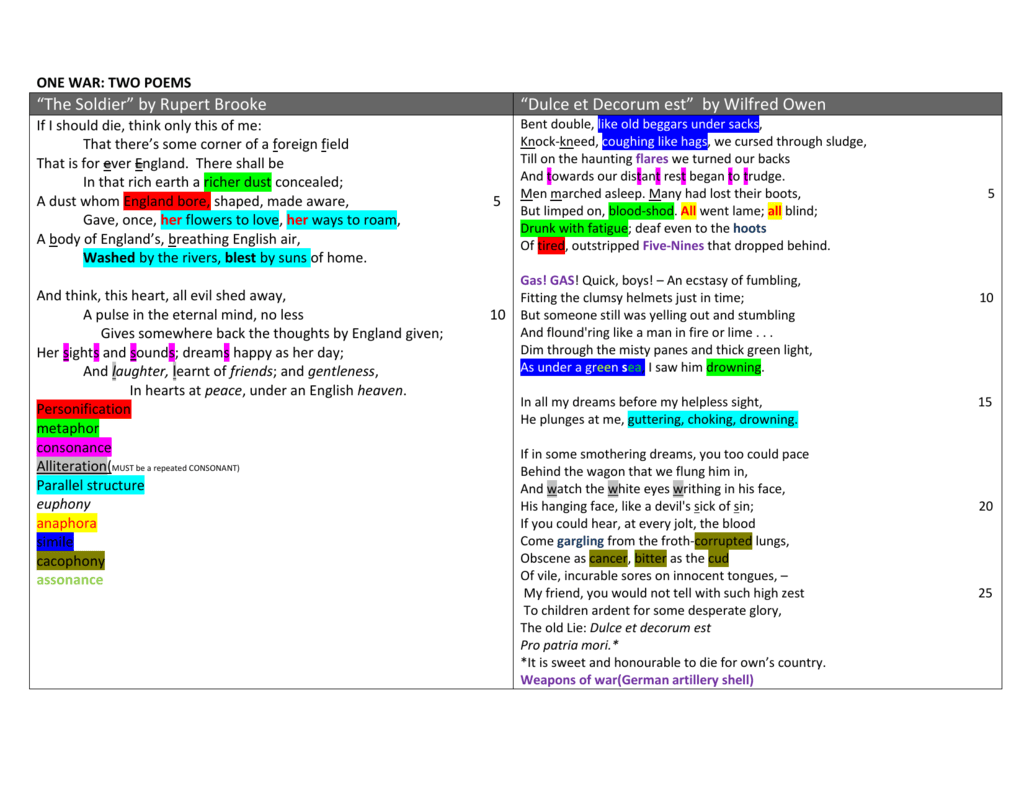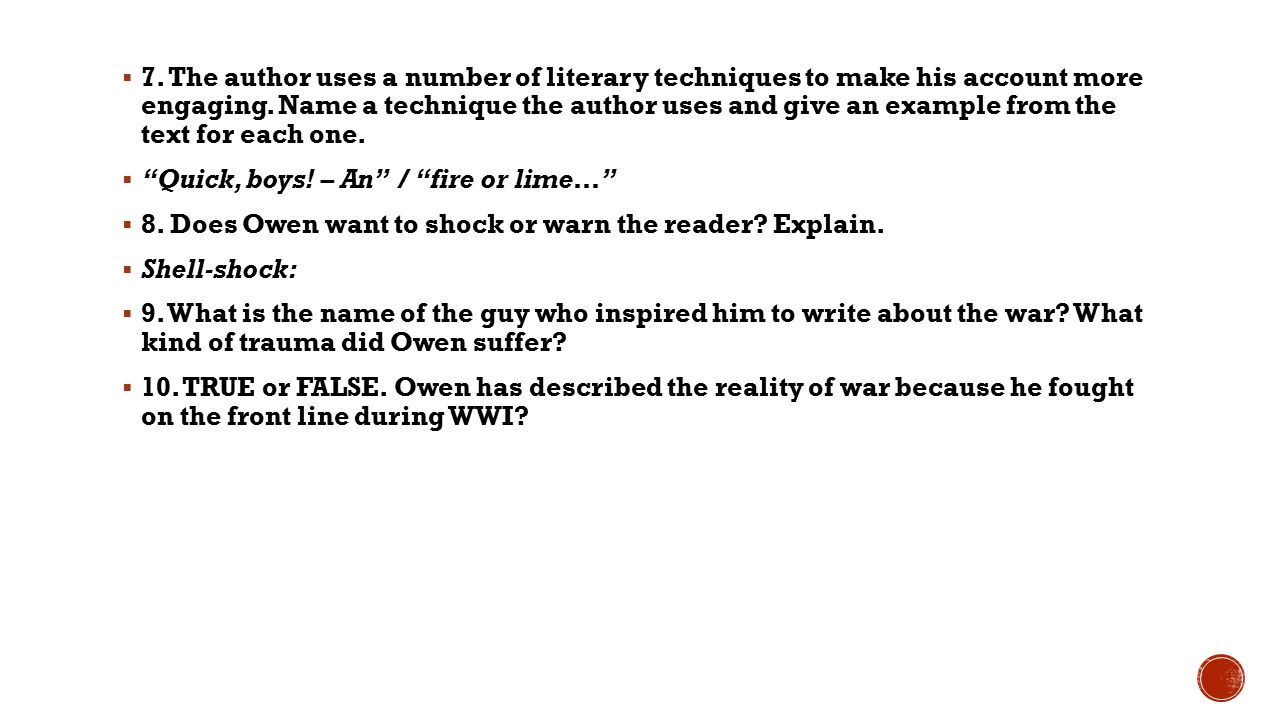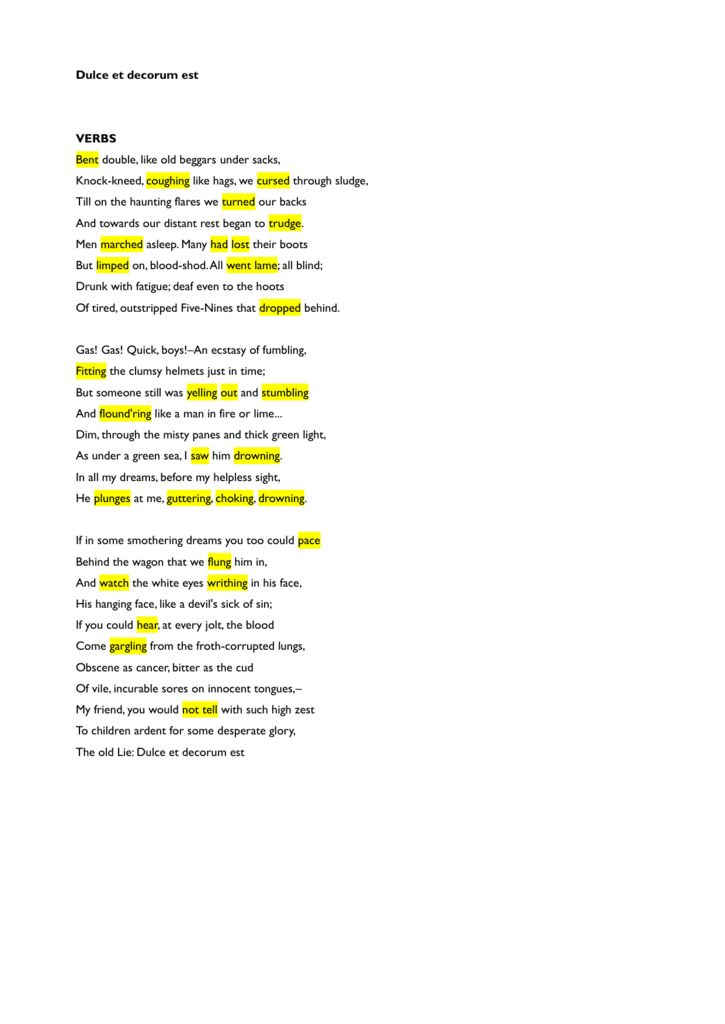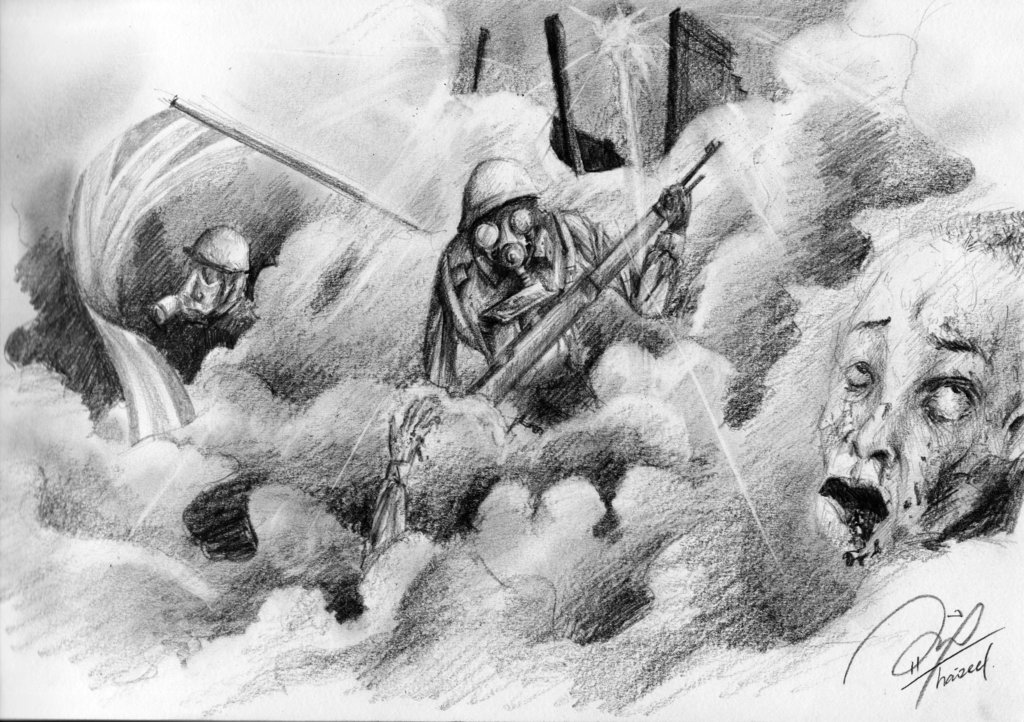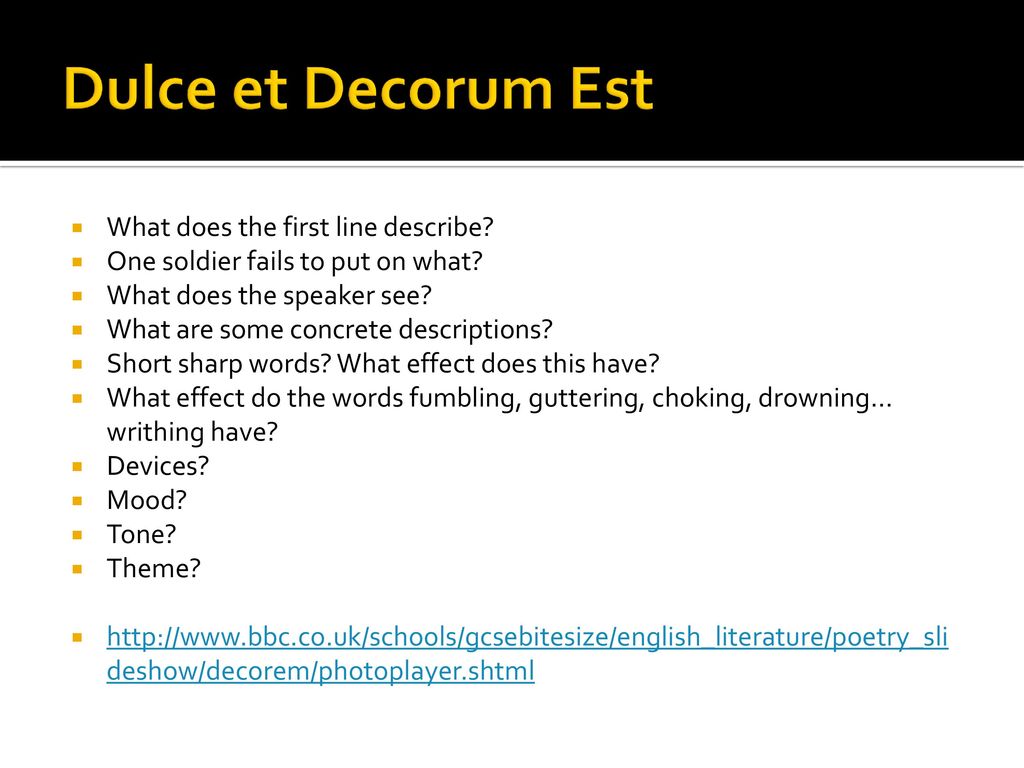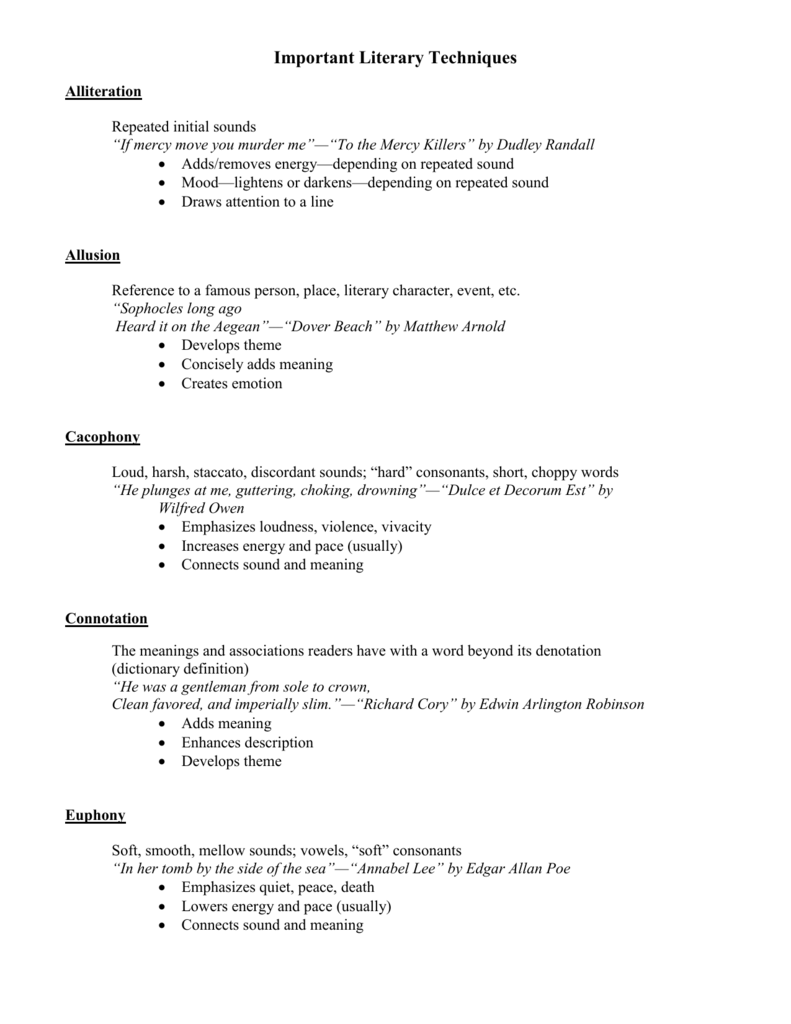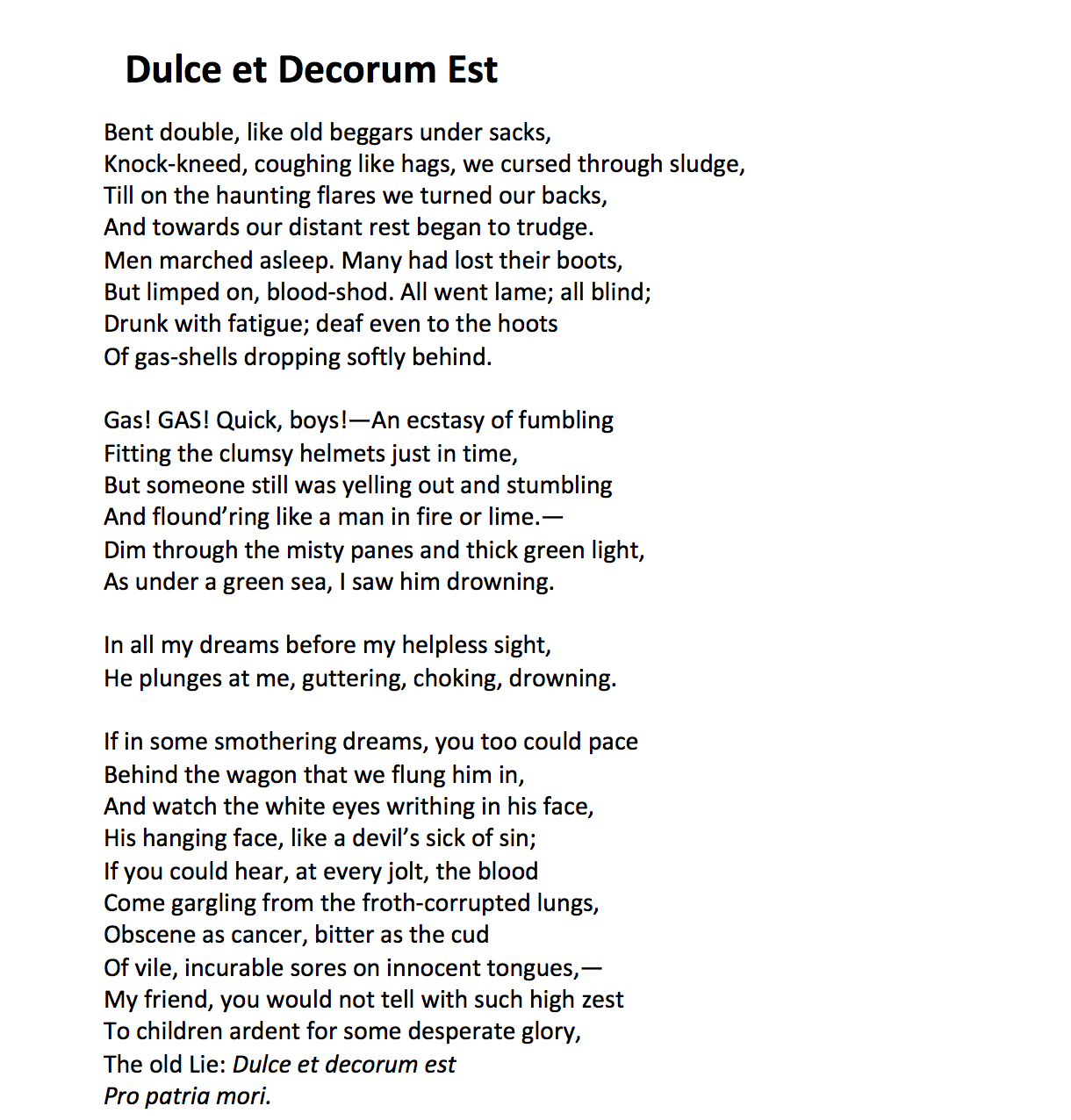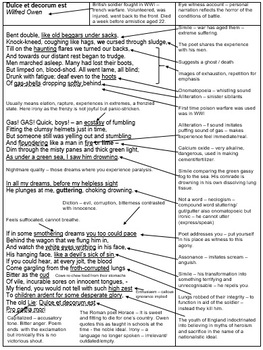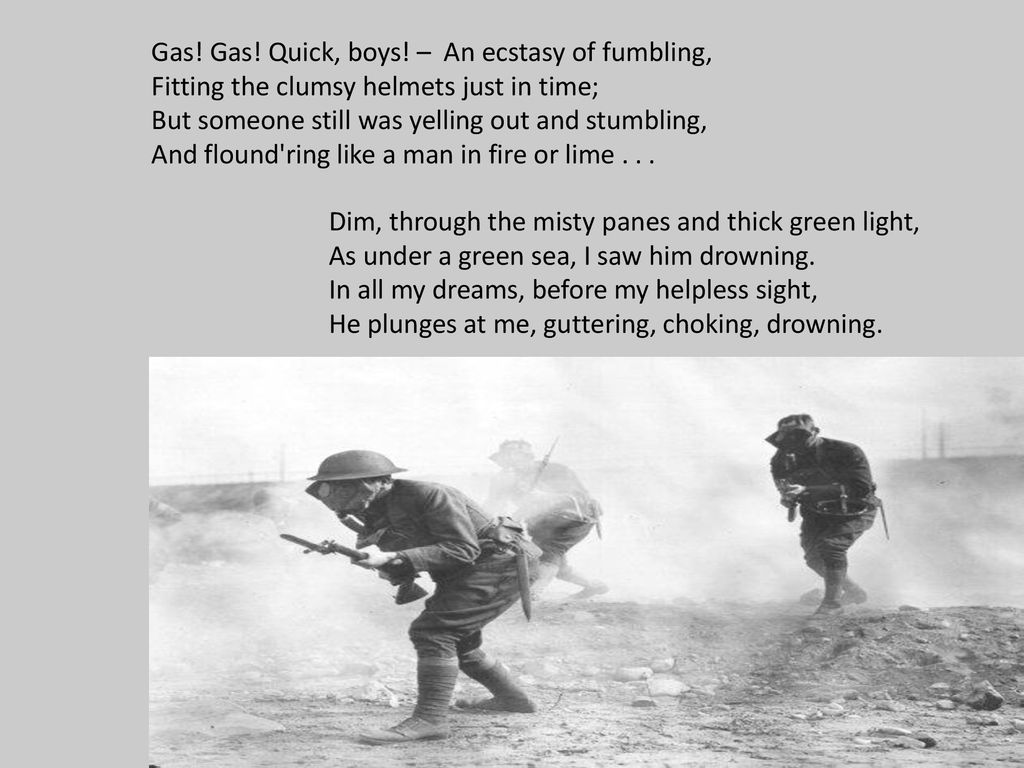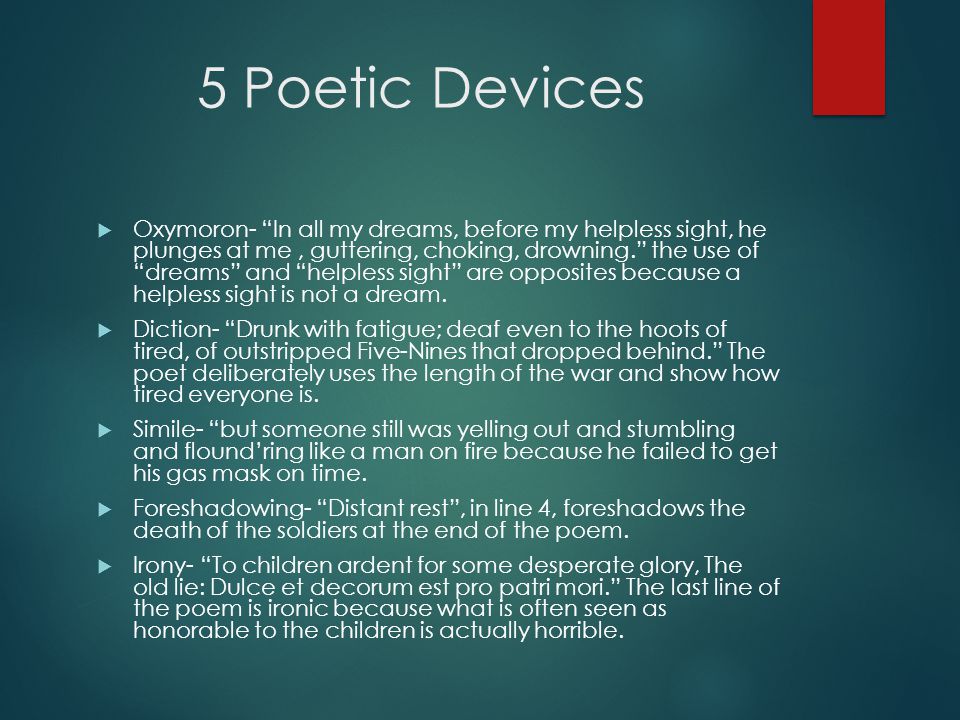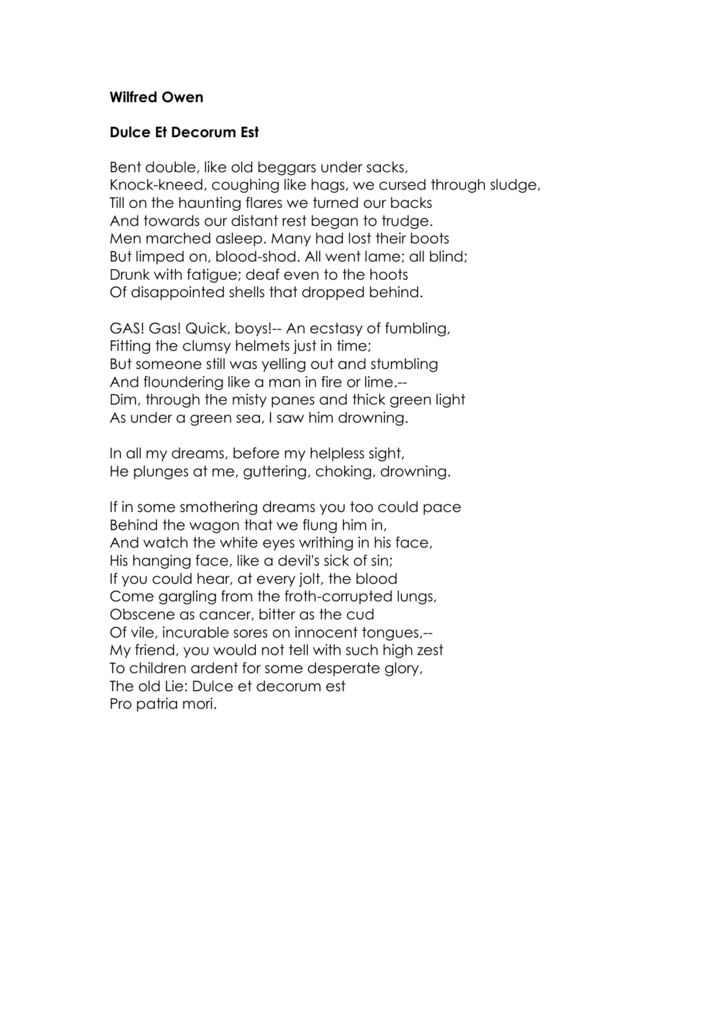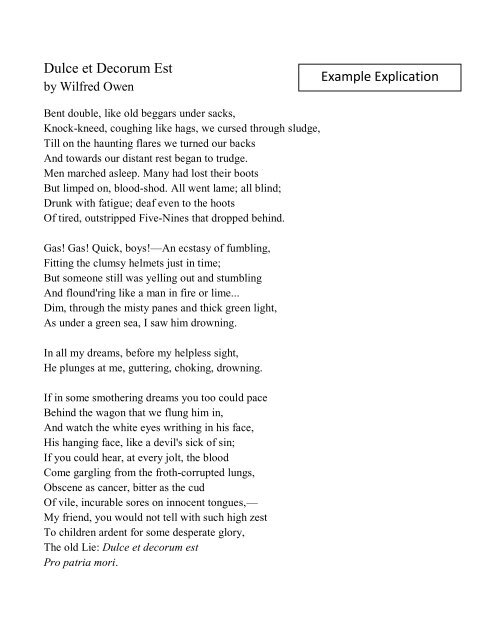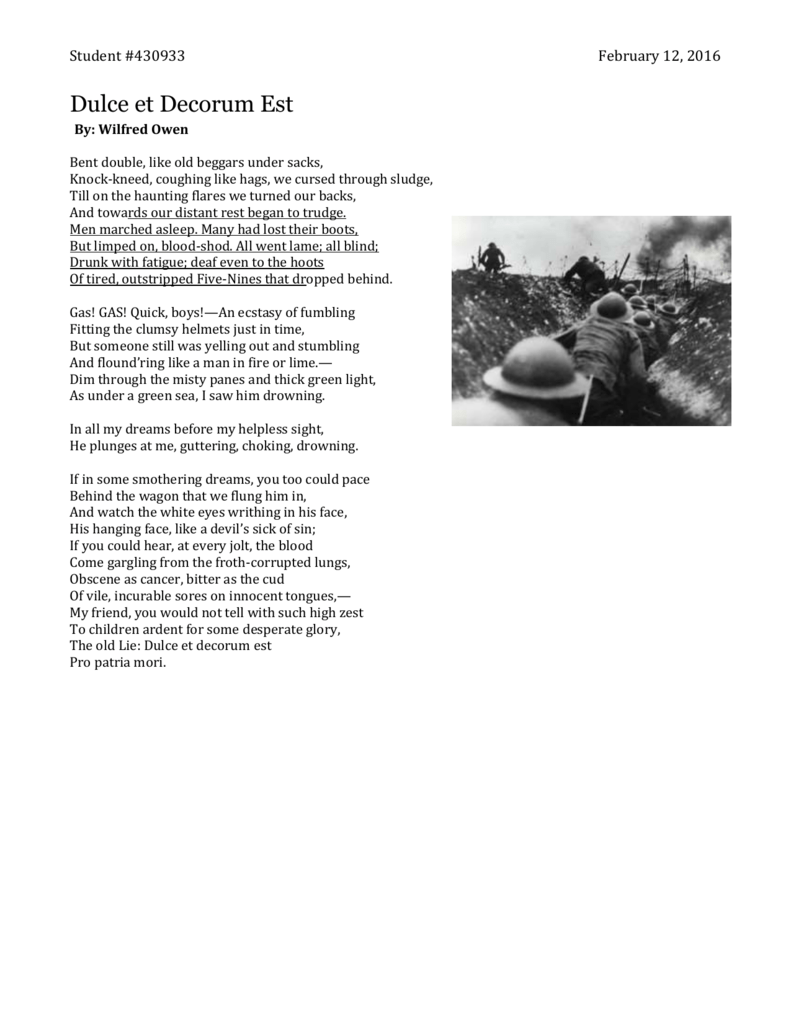More repetition can be seen with the use of repetitive suffixes in line 16 when the speaker explains that the man is guttering choking drowning dulce 16.
Guttering choking drowning literary device.
15 in all my dreams before my helpless sight 16 he plunges at me guttering choking drowning.
Swift with swiftness of the tigress.
What literary device is guttering choking drowning.
The soldiers die over and over in his dream making the suffering of wartime casualties never ending.
Bent double like old beggars under sacks knock kneed coughing like hags we cursed through sludge till on the haunting flares we turned our backs and towards our distant.
This sound is repeated in the couplet which follows the description of the soldier s painful death in the triple of verbs guttering choking drowning.
Because the trio of verbs are verbs that end in ing it gives the sense that the action is in the present tense.
Also these three verbs guttering choking and drowning are brutal merciless verbs.
He plunges at me guttering choking drowning.
Obviously the natural falling rhythm of these words created by the stressed syllable followed by the unstressed nasal sound is an attempt to convey the staggers and stumbles of the dying soldier.
I think alliteration but tigess ess comes at the end.
What device would that be.
The s sound repeats.
H if in some smothering dreams you too could pace i behind the wagon that we flung him in j and watch the white eyes writhing in his face i his hanging face like a devil s sick of sin.
J if you could hear at every jolt the blood k come gargling from the froth corrupted lungs l.
In all my dreams before my helpless sight he plunges at me guttering choking drowning literary devices.
Extended metaphor drowning choking on gas verbs onomatopoeia noun dreams adjective noun combination helpless sight.
I can t figure out if it is a literary device like assonance consonance etc and also.
These themes are foregrounded in powerful phrases such as like old beggars under sacks haunting flares blood shod guttering choking drowning just to show that the poem depicts this universal thematic idea.
This repetition uses strong consonants which create an unpleasant sound when spoken aloud which adds to the unpleasantness of the central theme.
18 behind the wagon that we flung him in 19 and watch the white eyes writhing in his face 20 his hanging face like a devil s sick of sin.
14 as under a green sea i saw him drowning.
17 if in some smothering dreams you too could pace.



